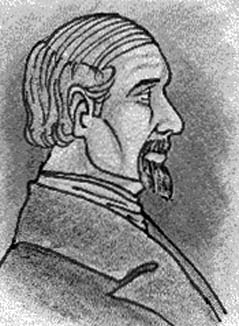Rafael Bombelli
 Rafael Bombelli was born in 1526 in Bologna. His father, Antonio Mazzoli, changed his name to Bombelli in order to avoid the reputation of the Mazzoli family. The Mazzoli family had once been very powerful and influential in Bologna. This all changed when Pope Julius II came to power. In 1506, the ruling family, the Bentivoglios, were exiled. In 1508, there was an effort to take back Bologna which failed. Mazzoli's grandfather was among those captured and executed. Later, Antonio Bombelli, was able to make his way back to Bologna as a wool merchant.
Rafael Bombelli was born in 1526 in Bologna. His father, Antonio Mazzoli, changed his name to Bombelli in order to avoid the reputation of the Mazzoli family. The Mazzoli family had once been very powerful and influential in Bologna. This all changed when Pope Julius II came to power. In 1506, the ruling family, the Bentivoglios, were exiled. In 1508, there was an effort to take back Bologna which failed. Mazzoli's grandfather was among those captured and executed. Later, Antonio Bombelli, was able to make his way back to Bologna as a wool merchant.Rafael was the eldest of six children of Antonio Bombelli. He did not go to the university but learned mathematics as an engineer. He took a deeper interest in mathematics and managed to read many of important math works of his day.
At this time, there was great publicity regarding the controversy around the solution of the cubic equation between Girolamo Cardano and Nicolo Fontana Tartaglia.
It is clear that Bombelli came to read Cardano's Ars Magna and also that he closed followed the debate between Tartaglia and Lodovico Ferrari in Milan in 1548.
We know that in 1549, Bombelli was tasked by Alessandro Rufini to work on a major engineering project to reclaim marshlands. He continued to work on this project unil 1555 when the work there was put on hold.
It was at this time, during the interruption of work, that Bombelli began work on a math book on algebra. He believed that the only work which delved deeply into the subject, Cardano's work, was too difficult and subtle for a majority of mathematicians. He sought to provide a clearer and more accessible version.
In 1560, Bombelli resumed the major engineering project. The project was deemed a giant success and afterwards, Bombelli found himself with a reputation as a very talented hydraulic engineer. He was now tasked to do other very important projects.
One time, when he was traveling in Rome, he learned about Diophantus's Arithmetica. He had not yet finished his intended book on algebra so his reading of Diophantus had a great impact on his math project. Bombelli then published the first three parts of his algebra in 1572.
Bombelli's Algebra is one of the most important and influential works ever published. It is a thorough and in depth analysis of the state of algebra. In it, he introduces the idea of complex numbers for the first time. Others had noticed the idea of negative numbers and the possibility of negative roots that appear in Cardano's cubic equation but it was Bombelli who first defended them as worthy of study in themselves.
Bombelli proposed a mathematical notation that was a significant advancement at the time.

He also proposes rules for addition, subtraction, and multiplication of complex numbers. Most importantly, he showed how reasoning about complex numbers using Cardano's cubic equation could lead to real values. I will go into more detail about this in my next blog.
Bombelli had intended to publish two more parts but he did not finish them. He died in 1572. The last two parts were later found and published in 1929. Today, Bombelli is considered the inventor of complex numbers.

No comments:
Post a Comment